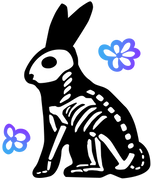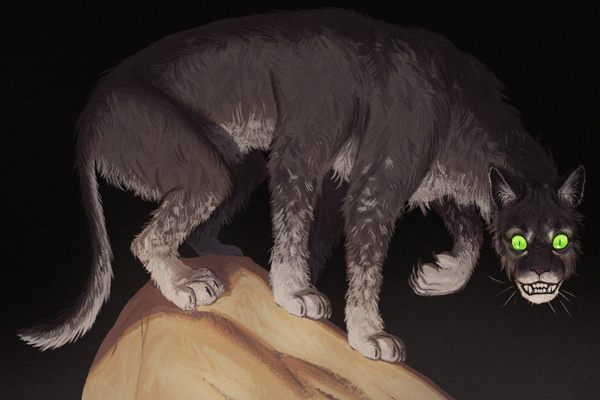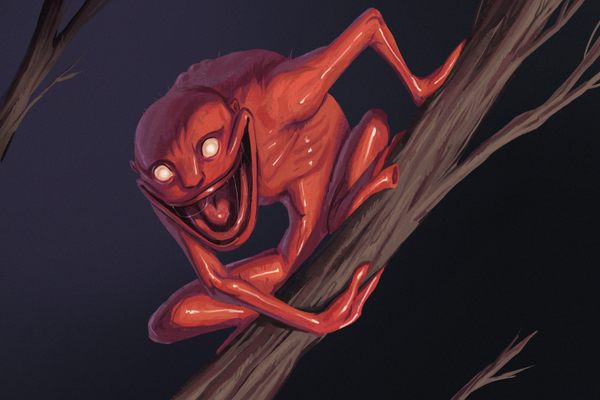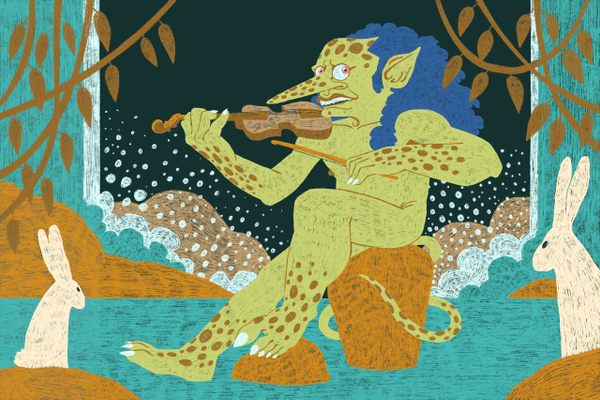Beware La Siguanaba, Latin America’s Murderous, Horse-Headed Beauty
Do not follow the woman in white.
In Honduras, she is La Cigua. In Costa Rica and Nicaragua, she is La Cegua. In El Salvador, she is La Cihuatnawal. And in the old neighborhoods of Guatemala City, she is La Siguanaba.
There, she has been seen wandering for centuries, through Ojo de Agua, along Santa Cecilia Avenue, near the Santa Cruz del Milagro church. Men—it was usually men—would spot her, often at night, while she was washing in the Las Vacas river or at one of the city’s numerous public tanks, where women would gather to do their families’ laundry in the years before water became available in most private homes. La Siguanaba was striking, always dressed in nearly transparent white robes, with long, beautiful, black hair. In the wealthier neighborhoods, she would brush her locks with a gold comb.
Many of the men who saw La Siguanaba felt compelled to approach her. She would rarely glance at one who drew near, but she would sometimes call to him as she stepped from the water, ensuring he would follow into the darkness. Sometimes he would trail her for miles, winding through cemeteries, crossing railroad tracks, even leaping ravines to get closer to this enchanting creature.
And finally, in a desolate spot that seemed fit only for an illicit rendezvous, La Siguanaba would turn and reveal herself: “And so the man saw that, instead of a [human] face, it had a horse face, it pounced on him to try to take him and bury him in the ravines.”

Susana de Estrada, a homemaker in her 60s, continued the story. She spoke as if she knew this man personally. “He struggled and in his tribulation. He remembered that he had a medallion hanging from his neck. He put it in his mouth, bit it, and prayed; so the woman screamed and she jumped into the abyss,” Estrada told Celso A. Lara Figueroa in 1967, when the famed Guatemalan anthropologist was still just a student. “The man’s face and arms were left with scratches that never healed, and that’s how he died.”
Figueroa heard many stories like this, tales of men entranced, or even killed, by an apparition. Those who entertained thoughts of betraying their wives and those who lusted after every woman who crossed their paths were the most in danger once they saw La Siguanaba’s face—sometimes described as a horse’s head, other times as a cracked skull, its lush black hair turned old and gray.
Many folklorists, Figueroa included, have hypothesized that the story of La Siguanaba can be traced to the descendants of the Spanish conquistadors who colonized the region in the 16th century. She carries a name that suggests Indigenous origins (though no one agrees on its exact roots; perhaps it evolved from the Nahuatl term cianauac or “concubine” or the Quiche word tziguán or “ravine.”) But La Siguanaba’s heavy-handed moral lesson about chastity feels distinctly European, an effort to instruct the Indigenous people on Christian strictures about sex and marriage. La Siguanaba, after all, is a threat only to those who are tempted to sin.
To save themselves the men who followed La Siguanaba had to make the decision to turn away from the woman and toward the Christian God, making the sign of the cross or appealing to a saint. Biting a metal object would also offer protection; a knife was best. Or these men could escape their fate by pulling or cutting off her luxurious hair.
Perhaps unsurprisingly, La Siguanaba can find no such refuge or redemption. She is still seen today, in rural communities throughout Latin America and the literature of Latin American migrants in the United States, forever cast as the seducer. In life, she had been an attractive woman who had taken many lovers and killed each one when she tired of him. Or maybe she had been a hardworking woman, a beloved wife, mother, and neighbor, until she chose to have an affair. There are countless versions of the woman in white, but in all tellings she is condemned to be a beautiful monster, haunting the loneliest alleys, using her body as a lure, and never escaping the cycle of violence. Night after night, she will cast her pursuer into a ravine, or she will be thrown into its depths, screaming all the way down.
La Siguanaba remains, as Figueroa was told more than 50 years ago, one of the many spirits God has not allowed to enter heaven.











Follow us on Twitter to get the latest on the world's hidden wonders.
Like us on Facebook to get the latest on the world's hidden wonders.
Follow us on Twitter Like us on Facebook